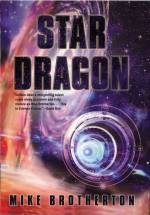Search
Supernova Explodes, Changes the World
February 25th, 2009
Overblown title for something much more subtle, but profound and cool.
Scientists have discovered evidence of several supernovas in Antarctic ice cores. The evidence is a spike in the concentration of nitrogen oxide, an expected effect from a flood of gamma rays hitting our atmosphere. Two of the three spikes found match known supernovas observed in the 11th century and historically known. Close enough to be seen and noticed (our own galaxy), they left their mark on our atmospheric chemistry.
The third spike is harder to understand, but might simply be from a supernova explosion only visible in the southern hemisphere where it was less likely to be noticed. Not a lot of civilizations keeping great records for us in the 11th century in the southern hemisphere, and supernovas are not necessarily always so obvious. Get one behind a big dust cloud and it would also be hard to see.
Anyway, I think this is really, really, cool. Almost all the information we have about things in space come from telescopic observations, and almost everything we “know” about the effects of supernovas or other celestial events on the Earth are theoretical. From supernova 1987A we detected a handful of neutrinos, and now from these supernovas we’re seeing evidence for atmospheric changes. The supernova remnants are still out there (e.g., the Crab nebula is one of them) and can be studied.
Stuff out there can have an effect down here. A supernova too close could have very damaging effects. There were three stories from Diamonds in the Sky that touch on these issues directly or indirectly, and they’re worth reading: “The Touch” by G. David Nordley, “Planet Killer” by Kevin R. Grazier and Ges Seger, and for the issue of killer asteroids, “How I Saved the World” by Valentin Ivanov.
I remember a Charles Sheffield book about Alpha Centauri going supernova…was that called Supernova? And Fred Hoyle, perhaps in collaboration, wrote a book about the Milky Way core becoming a quasar and it changing life on Earth. Was that Inferno? Hoyle’s The Black Cloud about the solar system passing through an interstellar molecular cloud is a class, too. Others?
You can follow any responses to this entry through the RSS 2.0 feed. You can leave a response, or trackback from your own site.


I just read a short story a few nights ago by Robert Charles Wilson that involved a supernova close enough for the radiation to destroy life on Earth — although that wasn’t the primary focus of the story.
In Greg Egan’s Diaspora, a gamma-ray burst threatens life on Earth, although most people have already emigrated to virtual worlds (located on servers that are presumably safe).
And there is a killer asteroid in The Light of Other Days (Arthur C. Clarke & Stephen Baxter) – it’s not the main plotline but knowledge of it has tremendous psychological and social effects.
Also, The Hammer of God (Clarke) and Lucifer’s Hammer (Niven & Pournelle)
I think something “out there” causes a sudden increase in intelligence in all the planet’s people and animals in Poul Anderson’s Brain Wave.
The core explosion chases the Puppeteers, anyway, out of the galaxy in Niven’s Known Space.
Anyway, this discovery is fascinating! Thanks!
I’ve read the big asteroid books. Diaspora and The Light of Other Days are both sitting on the “to read” shelf and have crept close to the top from time to time. Maybe sooner now rather than later. Thanks for the suggestions.